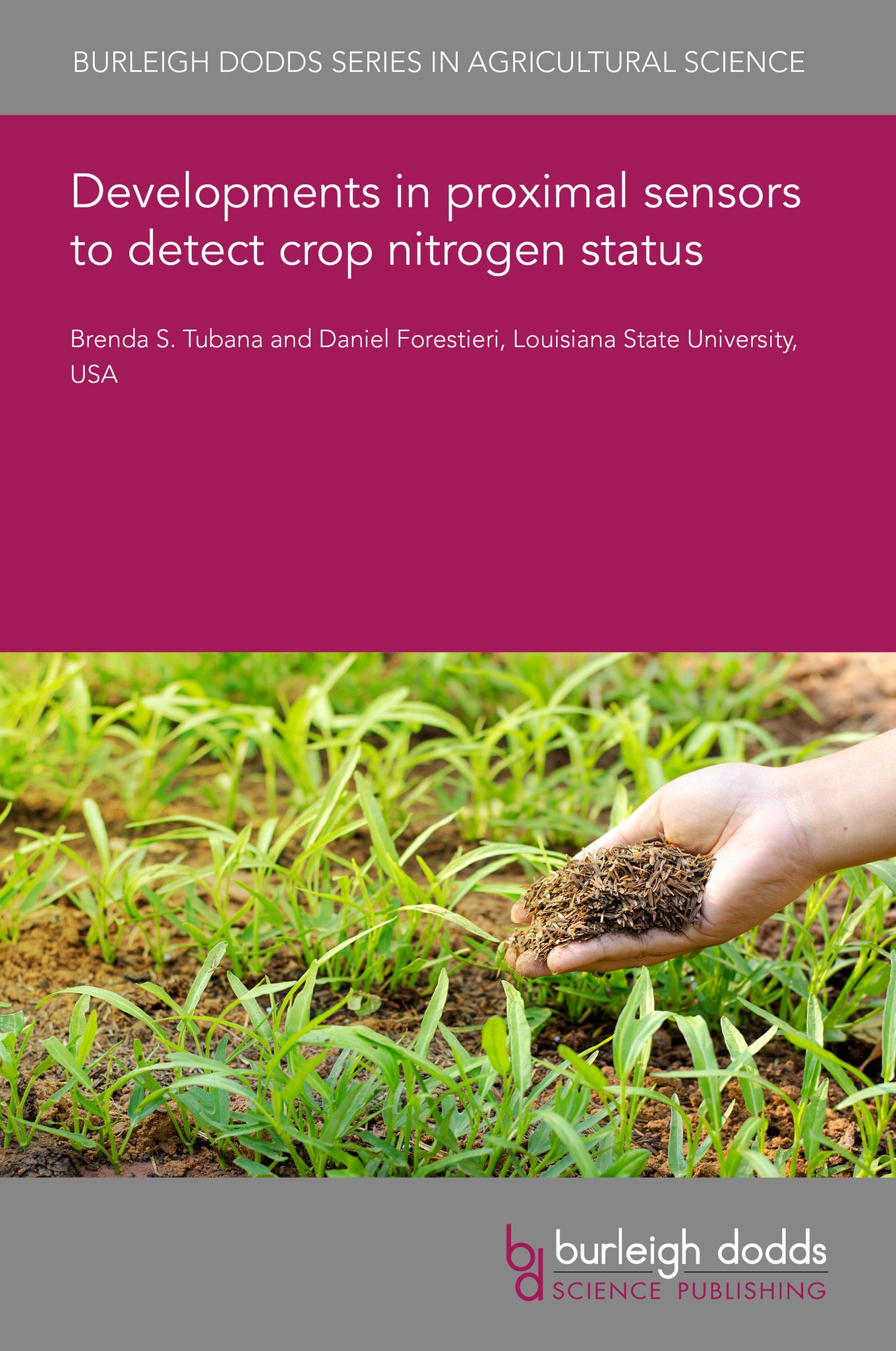We're sorry. An error has occurred
Please cancel or retry.
Developments in proximal sensors to detect crop nitrogen status

Some error occured while loading the Quick View. Please close the Quick View and try reloading the page.
Couldn't load pickup availability
- Format:
-
14 March 2024

Improving nitrogen use efficiency is a key objective in crop production. The development of proximal sensors represents a significant stet forward in achieving this objective. This chapter describes: i) the principles of proximal sensing, ii) proximal sensor types and iii) applications for crop nitrogen status assessment and developing nitrogen decision tools. Electromagnetic radiation that strikes leaf surfaces is either reflected, absorbed or transmitted. The fractions are influenced primarily by photosynthetic pigments and cell structure, and these plant traits are easily altered by nitrogen supply. Sensors that can capture reflectance, transmittance and fluorescence from visible and near-infrared radiation can therefore determine nitrogen status. Successful use of proximal sensors relies on building strong databases to: i) calibrate sensor readings to crop variables that are nitrogen sensitive and ii) generate nitrogen status measures and recommendations.

TECHNOLOGY & ENGINEERING / Agriculture / Sustainable Agriculture, Agronomy and crop production, TECHNOLOGY & ENGINEERING / Agriculture / Agronomy / Crop Science, SCIENCE / Environmental Science, TECHNOLOGY & ENGINEERING / Sensors, Sustainability, Sustainable agriculture, Agricultural engineering and machinery

- 1 Introduction
- 2 Principles of proximal sensing
- 3 Types of proximal sensors
- 4 Proximal sensor applications to estimate crop nitrogen requirement
- 5 Integration of crop data to develop algorithms to predict nitrogen requirements
- 6 Conclusion and future trends
- 7 Where to look for further information
- 8 References



